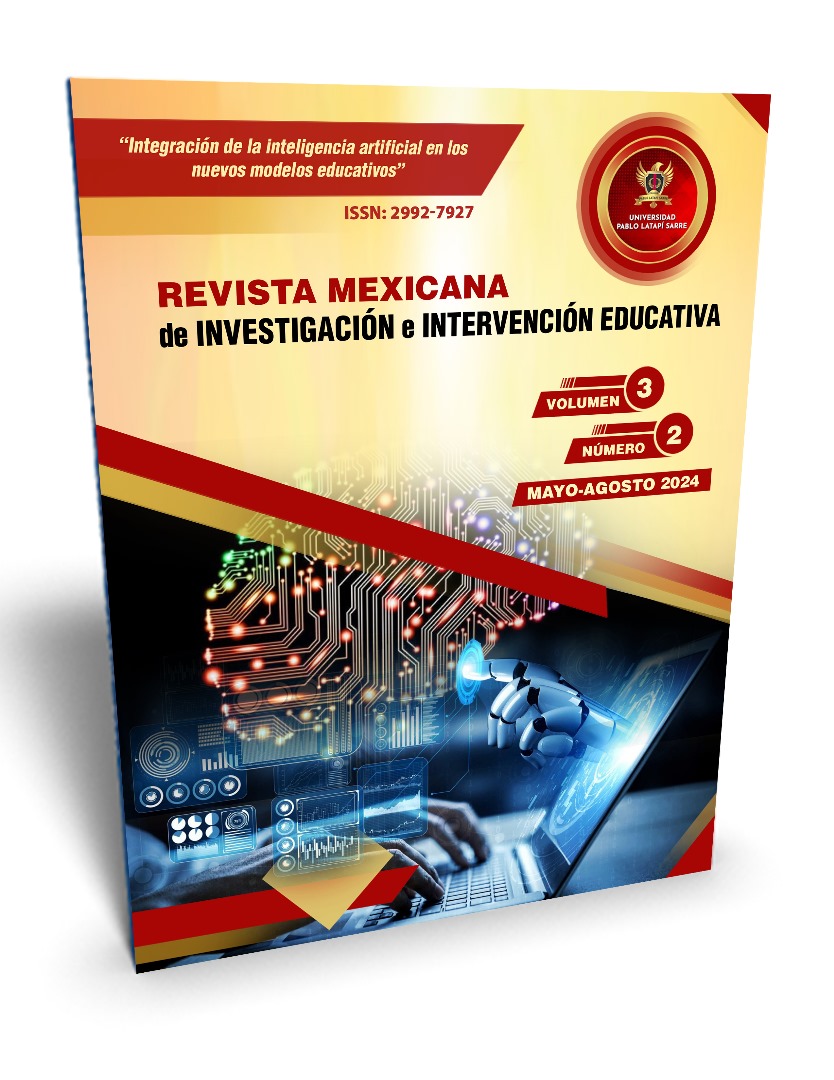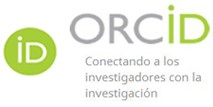Effect of the training plan on the technique of multi-joint bodybuilding exercises: biomechanical analysis
DOI:
https://doi.org/10.62697/rmiie.v3i2.86Keywords:
Biomechanics, planning, sport, active learning, performance-focused teachingAbstract
The objective of this article is to evaluate the effect of the implementation of a training program for the technical execution of multi-joint exercises through biomechanical analysis. The research is quasi-experimental with a longitudinal quantitative approach, applied to two groups, one experimental (EG) made up of 6 men and 4 women (age = 28 years ‡ 2.5 years and another control group (CG) made up of 6 men and 4 women (age = 26 years ‡ 4.03 years. The results through a biomechanical analysis, after applying a training program with multi-articulated and auxiliary exercises lasting 4 weeks, show a statistically significant improvement (p<0.05) of the EG in the flat bench press (BP) during the eccentric phase in the shoulder angle (p=0.005) and knee angle (p=0.017); Likewise in the barbell squat (BS) in the initial phase the center of gravity (CG) presents a significant difference in the coordinates of the Y axis (p=0.045); Likewise, during the descent phase in the hip angle (p=0.000), knee angle (p=0.001) and the Y axis (p=0.000) of the center of gravity.
Downloads
References
Aguado, X. (2019). Unidades de medida. In Biomecánica Básica aplicada a la actividad fisica y el deporte. Editorial Paidotribo.
American College of Sports Medicine. (2021). ACSM’s Guidelines for Exercise Testing and Prescription (11th ed.). Wolters Kluwer.
Bargueño, M. (2018). Cuidado al entrenar: el peligroso negocio de los trileros de gimnasio. Diario El Pais. https://elpais.com/elpais/2018/09/17/icon/1537181182_432873.html
Bompa, T., & Buzzichelli, C. (2021). Periodización del entrenamiento deportivo (4ta ed.). Paidotribo.
Camacaro, M., Colina, A., & Zissu, M. (2021). Análisis de las variables cinemáticas en la técnica del pateo en el fútbol a partir de criterios de eficiencia biomecánicos. SPORT TK-EuroAmerican, 10(2), 25–45. https://revistas.um.es/sportk/article/view/429211/309201
Delavier, F. (2023). Guía de los Movimientos de musculación. Descripciñon anatómica. Paidotribo.
Diaz, P. (2008). Planificación del entrenamiento. Una necesidad para triunfar en el deporte. Efdeportes.Com, 1–20. https://www.efdeportes.com/efd121/planificacion-del-entrenamiento-triunfar-en-el-deporte.htm
Geantă, V., & Herlo, J. (2020). Comparative Study on Multi-Joint and Single-Joint Exercises in Bodybuilding Economics. Arena: Journal of Physical Activities, 9, 81–92.
Gonzaga, M., Bravo, W., & Romero, E. (2022). Metodología de enseñanza de ejercicios de musculación en los gimnasios de Loja. Revista Científica Domino de Las Ciencias, 8, 1975–1993. https://doi.org/http://dx.doi.org/10.23857/dc.v8i3
Guaje, D., Guerra, G., & Cifuentes, J. (2023). Dispositivo para la medición del balance y corrección de la técnica del press de banca plano con barra. (Tesis de maestría). Universidad de Los Andes.
Infante, N., Pérez, N., & Fernández, Y. (2021). La resolución de problemas de Biomecánica Deportiva como actividad investigativa. Luz, 3, 6–21. https://luz.uho.edu.cu/index.php/luz/article/view/1127
Issurin, V. (2019). Entrenamiento Deportivo Periodizacion por Bloques. Paidotribo.
López, V., Bustamante, K., Candia, R., & Najera, R. (2022). Análisis de electromiografía en la sentadilla libre con barra: Revisión sistemática. Retos, 45, 611–621.
Mariño, E., Vargas, G., & Mármol, O. (2022). Perfil profesional de instructores en gimnasios en la ciudad de Cuenca - Ecuador. Cienciamatria, 8(3), 1081–1102. https://doi.org/10.35381/cm.v8i3.817
Matveyev, L. (2001). Teoría general del entrenamiento deportivo. Paidotribo.
Moreno Martínez, M. A., Romero Acosta, L. A., & Quintanilla Ayala, L. X. (2022). Diferencias biomecánicas del gesto técnico de la media sentadilla libre en físico-culturistas profesionales y amateur. PODIUM - Revista De Ciencia Y Tecnología En La Cultura Física, 17(2), 466–477. Recuperado a partir de https://podium.upr.edu.cu/index.php/podium/article/view/1258
Pila, M., & Morán, Ó. (2015). Enciclopedia de ejercicios musculación (3ra ed.). Pila Teña.
Prieto González, P., Sánchez-infante, J., & Fernández-Galván, L. M. (2022). Do young adult males aiming to improve strength or develop muscle hypertrophy train according to the current strength and conditioning recommendations? Federación Española de Asociaciones de Docentes de Educación Física (FEADEF), 46, 714–724. https://dialnet.unirioja.es/servlet/articulo?codigo=8557078
Quintanilla, J., Zuazo, I., Pérez, A., & Esteo, F. (2020). Anatomía humana para estudiantes de Ciencias de la Salud. ELSEVIER.
Ruiz Castro, F., Velasco Tenesaca, D., & Coral Apolo, G. (2023). Análisis biomecánico de la sentadilla libre en el levantamiento de potencia en Quito. PODIUM - Revista De Ciencia Y Tecnología En La Cultura Física, 18(1). https://podium.upr.edu.cu/index.php/podium/article/view/1396
Salgado, J., Barajas, A., & Sánchez, P. (2017). Impacto económico del deporte: tema de interés creciente en la literatura científica. Revista Internacional de Medicina y Ciencias de La Actividad Física y Del Deporte, 68(2017). https://doi.org/10.15366/rimcafd2017.68.010
Sotelo, I. (2023). Press banca: puntualizaciones técnicas y beneficios. Mundo Entrenamiento SL. https://mundoentrenamiento.com/press-banca-tecnica-y-beneficios/
Stastny, P., Gołaś, A., Blazek, D., Maszczyk, A., Wilk, M., Pietraszewski, P., Petr, M., Uhlir, P., & Zajac, A. (2017). A systematic review of surface electromyography analyses of the bench press movement task. PLoS ONE, 12(2), 1–16. https://doi.org/10.1371/journal.pone.0171632
Verkhoshansky, Y. (2018). Teoría y metodología del entrenamiento deportivo. Editorial Paidotribo.
Downloads
Published
How to Cite
Issue
Section
License
Copyright (c) 2024 Kevin Daniel Bustillos-Gaona, Helder Guillermo Aldas-Arcos

This work is licensed under a Creative Commons Attribution-NonCommercial-ShareAlike 4.0 International License.
Authors who publish in Revista Mexicana de Investigación e Intervención Educativa (RMIIE), of Universidad Pablo Latapí Sarre agree to the following terms:
1. Copyright
Authors retain unrestricted copyright to their work. Authors grant the journal the right of first publication. To this end, they assign the journal non-exclusive exploitation rights (reproduction, distribution, public communication, and transformation). Authors may enter into additional agreements for the non-exclusive distribution of the version of the work published in the journal, provided that acknowledgment of its initial publication in this journal is given.
© The authors.
2. License
The articles are published in the journal under the Creative Commons Attribution-NonCommercial-ShareAlike 4.0 International License (CC BY-NC-SA 4.0). The terms can be found at: https://creativecommons.org/licenses/by-nc-sa/4.0/deed.en
This license allows:
- Sharing: Copying and redistributing the material in any medium or format.
- Adapting: Remixing, transforming, and building upon the material.
Under the following terms:
- Attribution: You must give appropriate credit, provide a link to the license, and indicate if any changes were made. You may do this in any reasonable manner, but not in any way that suggests the licensor endorses or sponsors your use.
- NonCommercial: You may not use the material for commercial purposes.
- ShareAlike: If you remix, transform, or build upon the material, you must distribute your creation under the same license as the original work.
There are no additional restrictions. You may not apply legal terms or technological measures that legally restrict others from doing anything the license permits.












